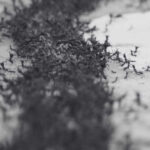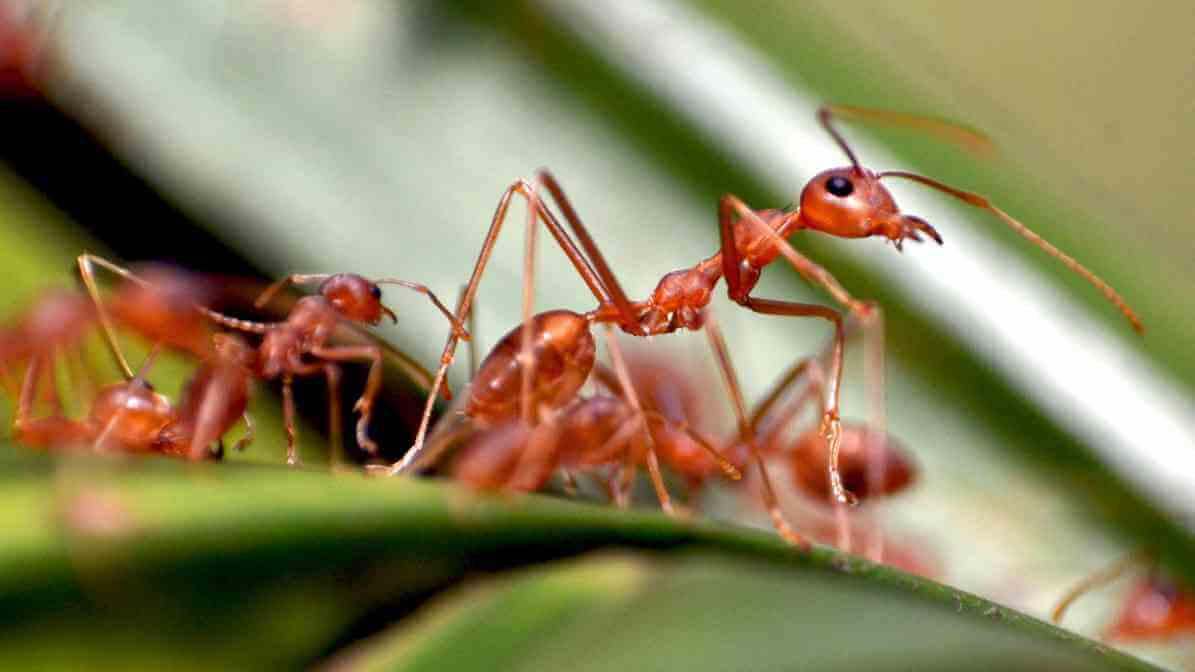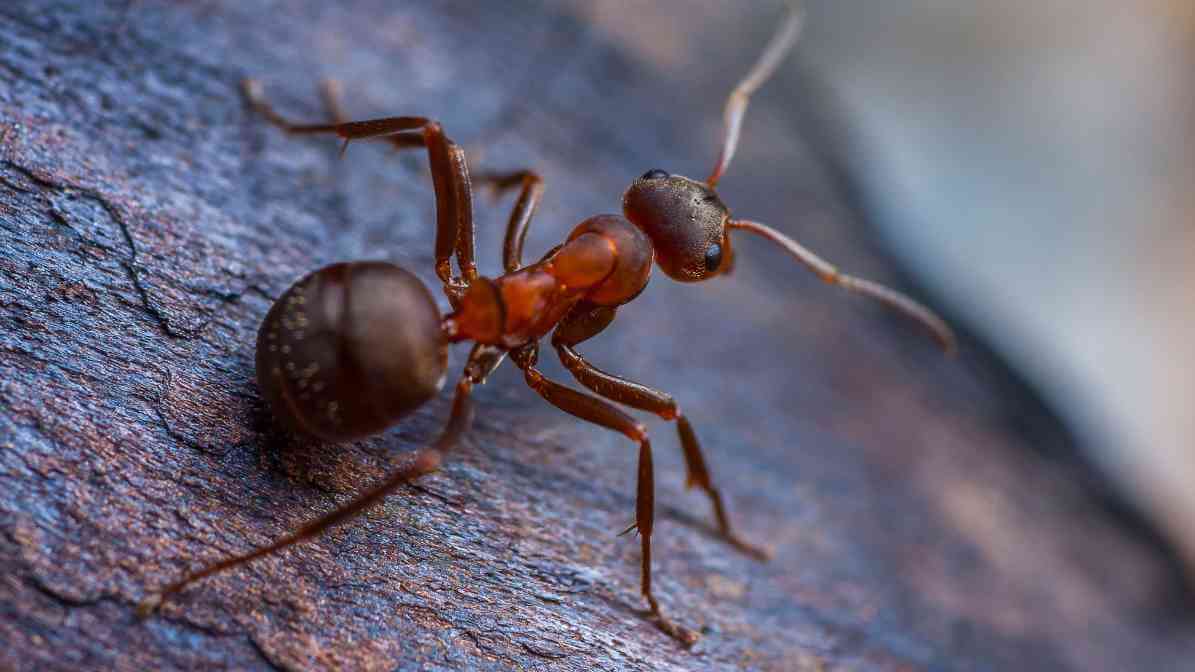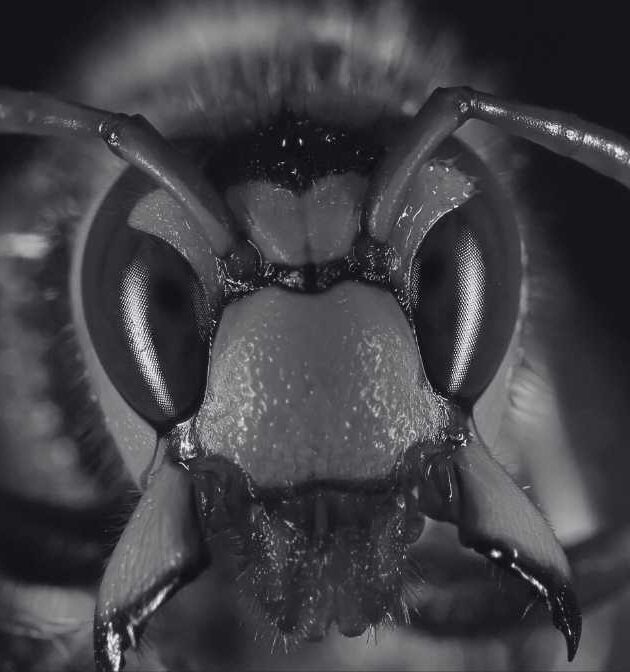
The Expert Guide to Prevent Mosquito Breeding and Bites
January 31, 2025
Unlock the Secrets of Natural Ant Repellent and Simple Home Remedies
August 4, 2025
Ants Pest Blog
Ant bites in Singapore pose a common yet manageable health concern. Especially given the diversity of ant species inhabiting our environment.
Ultimate Guide to Ant Bites in Singapore
Tackling Ant Bites in Singapore Effectively
Singapore’s vibrant urban landscape and tropical climate create an ideal environment for a diverse array of ant species. While most ants play beneficial roles in ecosystems, some can become a nuisance, particularly when they bite or sting. Ant bites are common in Singapore, especially in homes, gardens and outdoor spaces, leading to discomfort and health concerns. Recognising risks associate with bites and understanding ant species makes a difference in managing infestations and preventing health issues.
In recent years, innovative pest management techniques have transformed the way residents and pest control professionals address ant problems. These strategies emphasise safety, eco-friendliness, and long-term control, vital for safeguarding public health while protecting the environment. Explore different types of biting ant species in Singapore, the symptoms and approaches for effective ant bites treatment. By understanding these factors, residents can take proactive steps to minimise risks and enjoy a safer living environment.
Beware of The 12 Type of Ants Species That Bites or Sting
Types of Biting Ants in Singapore
Singapore is home to various ant species, many of which exhibit biting behaviour. Some type of ants are harmless and beneficial. Others venomous ants pose health risks their bite and sting capabilities to inject venom containing formic acid. Here’s a comprehensive overview of notable ant species known to bite in Singapore:




1. Fire Ants
Fire ants including the imported fire ant species are notorious for their bite and sting behaviour. When threatened, they swarm in attack and can inject venom, causing intense pain, burning sensations and pustules. Their aggressive behaviour and ability to inject venom make them particularly dangerous, especially to children or individuals with allergies. Their bites can lead to life-threatening allergic
2. Carpenter Ants
Carpenter ants are large, dark-coloured, and prefer nesting within wooden structures such as furniture, walls or decayed timber. When disturbed, they can deliver a painful carpenter ant bite, resulting in red bumps and swelling. These ants do not sting but may bite repeatedly, especially if their nest is under threat. Recognising signs of a carpenter ant colony such as wood damage or sawdust is important to prevent structural issues.
3. Harvester Ants
Harvester ants are less common but still present in Singapore’s natural environments. They mostly forage for seeds and plant material but can bite if disturbed. Their bite may cause localised irritation and swelling but generally isn’t dangerous unless an allergic reaction develops.
4. Pavement Ants
Pavement ants are small, dark brown or black ant species that infest cracks, gaps or crevices in walkways and foundations. They can bite when disturbed, causing minor irritation or ant bite marks. Their presence in building indicates structural vulnerabilities that should be address promptly.




5. Odorous House Ants
Named because they emit a foul smell when crushed, odorous house ants are common indoor invaders, especially in kitchens. They rarely bite or sting aggressively, their ant bites can leave small red bumps and cause itching, although they are primarily a nuisance pest.
6. Black Garden Ants
Black garden ants are commonly outdoors and sometimes enter homes in search of food. Their bites can cause minor discomfort with redness and ant bites itch. They are generally harmless but can become a pest when their colonies proliferate.
7. Pharaoh Ants
Pharaoh ants are tiny, yellowish ant species that often invade hospitals, homes or food establishments. Though their bite does not usually cause serious health issues, ongoing infestations can lead to secondary bacterial contamination. Their ant bite symptoms are typically mild, including localised redness and swelling.
8. Acrobat Ants
Acrobat ants are name for their distinctive behaviour of raising their abdomen over their head when disturbed. They can bite defensively and usually produce minimal symptoms like redness and swelling. It can be irritating, especially if multiple ants are involve in the attack.




9. Argentine Ants
An invasive ant species that has establish large colonies in Singapore, they are often in urban and garden environments. They are not typically aggressive biters but become pest through their large colonies and ability to displace native ants. Their presence signals potential pest control needs.
10. Red Ants
The term red ants generally refers to several species, including fire ants. Famous for their aggressive nature and painful fire ant stings. Their bite can cause ant bite marks accompanied by burning pain and swelling.
11. Sugar Ants
The sugar ants are small and prefers sweet treats and crumbs. They hardly bite or sting, usually invading the kitchens and pantries in properties. They will bite leaving behind bite marks. Their presence indicates available food sources.
12. Field Ants
Common in open, grassy areas and parks, field ants are generally harmless but may bite when threatened. Their ant bite symptoms include redness and swelling, but they rarely cause serious health issues. A concern because of their bites acting as potential entry points for bacteria or secondary infections if scratched excessively.
Ant Bites Symptoms and Early Treatment
Recognising the Symptoms of Ant Bites
Understanding ant bite symptoms is essential for early treatment and minimising discomfort. Usually, a bite will lead to the appearance of a small, red bump, often surrounded by mild swelling. These red bumps may be itchy or tender, sometimes accompanied by a burning sensation.
Ant bites itch because the body’s immune system reacts to the venom or saliva injected by the ant during the bite and sting. The symptoms can vary depending on the ant species, individual sensitivity, and whether an allergic reaction occurs. For some, bites may cause only minor discomfort, but others especially those with sensitivities. They may experience more severe signs such as swelling, blistering or even systemic symptoms like difficulty breathing.

Signs of carpenter ants include bites, swelling and irritation, usually around the forearms and legs if insects feel threat. Fire ants are aggressive and fire ant stings often produce painful pustules or pustule-like ant bite marks that can last for several days.
Multiple times getting bites can increase the risk of local reactions developing into secondary infections from scratching. If an insect bite becomes infect, it may require medical attention. In certain cases, pest control measures may be necessary to eliminate the source.
Ant Bite Marks and The Treatment in Singapore
Effective Ant Bites Treatment
When bitten by ants, prompt and appropriate ant bite treatment can significantly reduce symptoms and prevent complications. Here are effective methods to manage getting sting multiple times and treat ant bites:
Cold Compresses
Applying a cold pack or ice wrap in cloth to the area for 10-15 minutes helps reduce swelling and alleviates pain. This is particularly useful for fire ant bites or fire ant stings which tend to be more painful.
Over-the-Counter Remedies
Topical hydrocortisone cream, corticosteroids or antihistamine creams can help reduce swelling and ant bites itch. Oral antihistamines can also assist with allergic reactions and alleviate general discomfort.
Cleaning and Hygiene
Washing the bite area with soap and water prevents secondary bacterial infections. Keeping the area clean minimises the risk of complications.
Pain Relief
Analgesic medications like ibuprofen or acetaminophen can help manage pain associated with bites.
Monitoring for Allergic Reactions
Severe allergic responses require immediate medical attention. Signs include difficulty breathing, swelling of the face or throat, dizziness or life-threatening shock. Always carry an insect repellent or epinephrine auto-injector if prone to severe allergic reactions.
When to See a Doctor
If the ant bite results in persistent swelling, signs of infection. And if ant bite marks worsen or do not heal, consult healthcare professionals promptly.
Preventive Measures and Effective Methods
Innovative Pest Control and Management Strategies
Prevention is always better than cure. In Singapore, implementing innovative pest management techniques can effectively control ant populations and significantly reduce the likelihood of bites. Some key pest control strategies include:
Sanitation and Habitat Modification
Maintain a clean environment by clearing food crumbs, sealing containers and cleaning up spills promptly. Repair cracks and gaps in walls, floors and foundations to block entry points for ant species seeking shelter.
Eco-friendly Baits and Barring
Using bait stations that attract ants with sweet substance or protein-base baits. These slow-acting solutions are ingest and send by worker ants to the rest of the colony. Gradually reducing ant colonies in a safe manner.
Natural Deterrents
Substances like vinegar, citrus peels and essential oils act as natural insect repellents and disrupt ant trails.
Professional Pest Control
Our licensed pest control services in Singapore utilise integrated strategies including targeted chemical treatments, residual sprays and baiting to remove ant colonies. They also employ eco-friendly solutions designed to be safe for families and pets. Regular inspections can detect early signs of infestation. Especially in high-risk areas like kitchens, gardens and outdoor living spaces.
Your 2025 Guide to Safe and Quick Ants Bite Relief
Innovative Pest Blog Summary
Ant bites in Singapore are a common yet manageable issue when armed with the right knowledge and techniques. Recognising the different ant species, from aggressive fire ants to elusive carpenter ant helps determine the appropriate response. Ant bite symptoms, such as redness, swelling and ant bites itch, can be alleviate effectively. With home remedies like cold compresses and topical treatments, but when infestations are severe, professional pest control is essential.
Adopting innovative pest management methods including eco-friendly approaches, habitat modification and targeted baiting. This are methods that can significantly reduce ant species populations and prevent future bites. Protecting your family’s health and maintaining a safe home environment in Singapore requires proactive measures and expert assistance.




